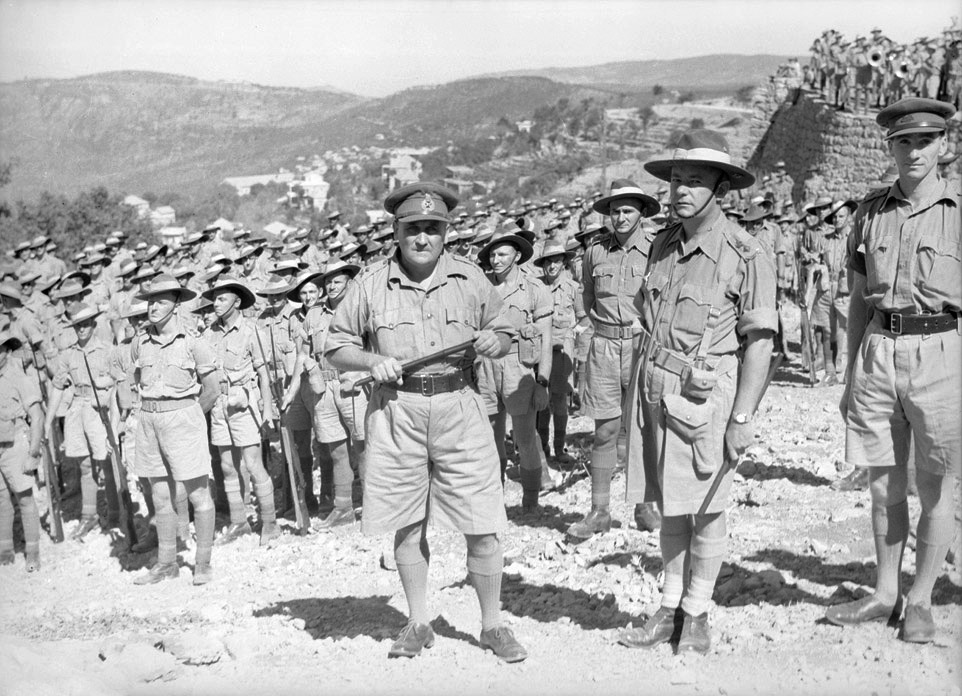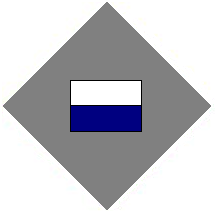|
Battle Of Sidon (1941)
The Battle of Sidon (13–15 June 1941) was part of the Australian 7th Division's advance on Beirut, which took place during the five-week-long Syria-Lebanon campaign fought between the Allies and Vichy French forces in Syria and Lebanon. Sidon, a town of about 12,000 people at the time with a number of historic mosques and castles dating back to the Crusades, was positioned on the coast to the north of Tyre, about halfway between the Lebanese border with Palestine and Beirut. The fighting came several days after the Allied forces from the Australian 21st Brigade, under Brigadier Jack Stevens, crossed the Litani River as part of Operation Exporter. After preliminary moves by the 2/27th Infantry Battalion around Adloun, the 2/14th Infantry Battalion had carried the advance north along the coast towards Sidon. On 13 June, the 2/16th Infantry Battalion, with artillery and cavalry support, was assigned the task of capturing the town itself, undertaking a daylight advance ove ... [...More Info...] [...Related Items...] OR: [Wikipedia] [Google] [Baidu] |
21st Brigade (Australia)
The 21st Brigade was a brigade-sized infantry unit of the Australian Army. It was briefly raised in 1912 as a Militia formation providing training as part of the compulsory training scheme. Later, it was re-formed in April 1940 as part of the Second Australian Imperial Force, the unit was raised for service during World War II. As part of the 7th Division the brigade's constituent units were raised from volunteers from several Australian states. After rudimentary training in Australia, the brigade deployed for the Middle East in October 1940. Defensive duties were mounted along the Libyan border in early 1941, before the brigade was committed to the Syria-Lebanon campaign, fighting against Vichy French forces. In early 1942, following Japan's entry into the war, the brigade returned to Australia. After a period of defensive duties in Australia, it was deployed to New Guinea and subsequently played a key role in the Kokoda Track campaign, delaying the Japanese advance towards Por ... [...More Info...] [...Related Items...] OR: [Wikipedia] [Google] [Baidu] |
2/9th Cavalry Commando Regiment (Australia)
The 2/9th Cavalry (Commando) Regiment was one of three commando regiments raised by the Australian Army for service during World War II. It was originally raised in 1940 as an armoured cavalry unit as part of the 8th Division, before being transferred to the 9th Division. Between 1941 and 1942 the regiment saw action in the Middle East before being returned to Australia in early 1943. At this time the regiment was re-organised as the administrative headquarters for the 2/4th, 2/11th and 2/12th Commando Squadrons and it was converted into a commando regiment. Later in 1945 the unit saw action during the landings on Tarakan on Borneo before being disbanded upon the cessation of hostilities. History Formation The 2/9th Cavalry (Commando) Regiment was formed in July 1940 at Seymour, Victoria as part of the Second Australian Imperial Force of the Australian Army. Initially, it was designated the "8th Division Cavalry Regiment"; however, it was redesignated as the "9th Division Cav ... [...More Info...] [...Related Items...] OR: [Wikipedia] [Google] [Baidu] |
2/6th Cavalry Commando Regiment (Australia)
The 2/6th Cavalry Commando Regiment was a cavalry regiment of the Australian Army that served during the Second World War and was later converted into a commando unit. Formed at Ingleburn, New South Wales, in November 1939, it was originally raised as an armoured reconnaissance regiment attached to the 6th Division. In that role, the 2/6th saw action in the North Africa campaign and in the Middle East during 1940–41, where the regiment distinguished itself at Bardia, Tobruk and in Syria. Later, following Japan's entry into the war, the 6th Division was brought back to Australia and following a re-organisation, the regiment was converted into a cavalry commando regiment, incorporating the independent companies that had been formed at the start of the war. In late 1944, the 2/6th Cavalry Commando Regiment was deployed to New Guinea, where it participated in one of the final Australian campaigns of the war in the Aitape–Wewak area. History Formation The regiment was raised a ... [...More Info...] [...Related Items...] OR: [Wikipedia] [Google] [Baidu] |
2/3rd Machine Gun Battalion (Australia)
The 2/3rd Machine Gun Battalion was formed in June 1940 as part of the 7th Division and served in Egypt, Syria, the Netherlands East Indies and New Guinea during World War II. Under the command of Lieutenant Colonel Arthur Blackburn when it was raised, the battalion was primarily a South Australian unit, although it had sub-units formed in Victoria, Tasmania and Western Australia. After completing training in Australia, in April 1941 the battalion embarked for the Middle East. In June/July 1941 it saw action against Vichy French forces during the Syria–Lebanon campaign, during which time the battalion was heavily involved in supporting various elements of the 7th Division. Following Japan's entry into the war, the decision was made to transfer a large number of Australian troops from the Middle East to the Pacific region. In early 1942, as the Japanese advanced through the Netherlands East Indies, the majority of the battalion was captured during the Battle of Java. A smal ... [...More Info...] [...Related Items...] OR: [Wikipedia] [Google] [Baidu] |
Battle Honour
A battle honour is an award of a right by a government or sovereign to a military unit to emblazon the name of a battle or operation on its flags ("colours"), uniforms or other accessories where ornamentation is possible. In European military tradition, military units may be acknowledged for their achievements in specific wars or operations of a military campaign. In Great Britain and those countries of the Commonwealth which share a common military legacy with the British, battle honours are awarded to selected military units as official acknowledgement for their achievements in specific wars or operations of a military campaign. These honours usually take the form of a place and a date (e.g. "Cambrai 1917"). Theatre honours, a type of recognition in the British tradition closely allied to battle honours, were introduced to honour units which provided sterling service in a campaign but were not part of specific battles for which separate battle honours were awarded. Theatre h ... [...More Info...] [...Related Items...] OR: [Wikipedia] [Google] [Baidu] |
Battle Of Damour
The Battle of Damour (5–9 July 1941) was the final major operation of the Australian forces during the Syria-Lebanon Campaign of World War II. Background In 1941, Damour was the French administrative capital. Damour is a large town on the coast of Lebanon and is approximately 30 kilometres south of Beirut. The Wadi Damour, with the Damour River in its bed, was a further three kilometres to the south of the town. These features were the last major natural obstacles that had to be crossed prior to reaching Beirut. Having already captured the heights overlooking Damour on the south bank of the wadi, the plan developed by Major General Arthur "Tubby" Allen, commanding the 7th Australian Division, involved encircling the Vichy French positions at Damour. Battle On the night of 5 July 1941, the operation began with troops of the 21st Brigade moving into position to cross the Damour River in two places. Early on 6 July, the Australians attacked Vichy French positions on the ... [...More Info...] [...Related Items...] OR: [Wikipedia] [Google] [Baidu] |
25th Brigade (Australia)
The 25th Brigade was a brigade-sized infantry unit of the Australian Army that served during the Second World War. Raised in July 1940 and consisting of three infantry battalions, the 25th Brigade initially served in the United Kingdom, where it formed part of the garrison tasked with defending against a possible German invasion. In 1941, the brigade was redeployed to the Middle East where it took part in the Syria–Lebanon campaign fighting several actions around Merdjayoun and Jezzine. Following Japan's entry into the war, the 25th Brigade was transferred back to Australia and subsequently took part in the fighting in New Guinea. Throughout 1942–1943, the brigade fought in the final stages of the Kokoda Track campaign and around Buna–Gona. Later, they took part in the fighting around Lae and Shaggy Ridge, before being withdrawn to Australia for a long period of rest and reorganisation. In 1945, the 25th Brigade was committed to the Borneo campaign, carrying out an a ... [...More Info...] [...Related Items...] OR: [Wikipedia] [Google] [Baidu] |
Battle Of Jezzine (1941)
The Battle of Jezzine (13 June 1941) was part of the Australian 7th Division's advance on Beirut during the five-week-long Syria-Lebanon campaign by the Allies against Vichy French forces in Syria and Lebanon. Jezzine, Lebanon, is about halfway between the Lebanese border with Mandatory Palestine and Beirut. This battle was one of several hard-fought actions during the Australian advance on Beirut from Mandatory Palestine. Australian troops from the 25th Brigade (less the 2/33rd Battalion) attacked Jezzine on 13 June 1941, following the capture of Merdjayoun, which the Allies temporarily captured on 11 June 1941, allowing the commander of the Australian 7th Division, Major General John Lavarack to switch the 25th Brigade's focus north towards Jezzine, leaving a small force to hold Merdjayoun, which was later subjected to a heavy counter-attack. During the fighting for Jezzine, when his company suffered casualties from intense machine gun fire, Private Jim Gordon, 2/31s ... [...More Info...] [...Related Items...] OR: [Wikipedia] [Google] [Baidu] |
Tirailleur
A tirailleur (), in the Napoleonic era, was a type of light infantry trained to skirmish ahead of the main columns. Later, the term "''tirailleur''" was used by the French Army as a designation for indigenous infantry recruited in the French colonial territories during the 19th and 20th centuries, or for metropolitan units serving in a light infantry role. The French army currently maintains one tirailleur regiment, the '' 1er régiment de tirailleurs''. This regiment was known as the 170th infantry regiment between 1964 and 1994. Prior to 1964, it was known as the ''7e régiment de tirailleurs algériens'', but changed its name after it moved to France as a result of Algerian independence. History Napoleonic period In the wars of the French Revolutionary and Napoleonic periods, the designation "tirailleur" was a French military term used at first to refer generically to light infantry skirmishers. The first regiments of Tirailleurs so called were part of the Imperial G ... [...More Info...] [...Related Items...] OR: [Wikipedia] [Google] [Baidu] |
2/4th Field Regiment (Australia)
The 2/4th Field Regiment was an Australian Army artillery regiment formed on 2 May 1940, as part of the 7th Division during World War II. The regiment was involved in campaigns in North Africa, Syria–Lebanon, Salamaua–Lae, the Finisterre Ranges and Borneo. After training in Victoria, the regiment deployed to North Africa in late 1940. After being deployed in the defence of Mersa Matruh in Egypt in early 1941, the regiment took part in the fighting against the Vichy French in Syria and Lebanon, before undertaking garrison duties there. It returned to Australia in early 1942 following Japan's entry into the war, and in September 1943, a small group of artillerymen from the 2/4th parachuted with two short 25 Pounder guns in the airborne landing at Nadzab airstrip in New Guinea in support of the US Army's 503rd Parachute Infantry Regiment. Later, the regiment took part in the 7th Division's advance through the Finisterre Range before returning to Australia in early 1944. It ... [...More Info...] [...Related Items...] OR: [Wikipedia] [Google] [Baidu] |
2/16th Battalion (Australia)
The 2/16th Battalion was an infantry battalion of the Australian Army, serving during World War II. Attached to the 21st Brigade that was assigned to the 7th Division, the 2/16th was raised in 1940 as part of the Second Australian Imperial Force from volunteers drawn mainly from the state of Western Australia. After training in Australia, the battalion was deployed to the Middle East where it undertook defensive duties along the Egyptian–Libyan border in early 1941 before taking part in the Syria–Lebanon campaign, fighting against Vichy French forces in June and July. At the conclusion of the campaign, the 2/16th remained in Lebanon, contributing to the Allied occupation force there, before returning to Australia in early 1942 following Japan's entry into the war. In August 1942, they were committed to the fighting along the Kokoda Track and then later fought around Buna and Gona. After a period of rest and reorganisation in Australia, the battalion fought around Lae and ... [...More Info...] [...Related Items...] OR: [Wikipedia] [Google] [Baidu] |








